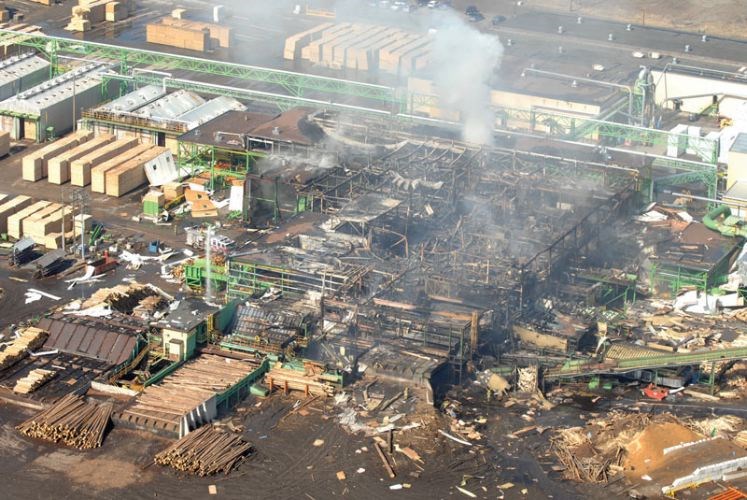Understanding of the potential of sawdust as a combustible hazard has much improved since the explosions that leveled Lakeland Mills in April 2012 and Babine Forest Products three months earlier, a WorkSafe inspector told a coroner's inquest Thursday.
Kim Hess said she now has an understanding of how to assess the role of combustible dust and recognizes that confinement, one of the key ingredients in the recipe for an explosion, is not limited to more tightly confined areas such as baghouses.
The greater understanding is also evident among sawmill operators and their employees, Hess said.
"There's been a significant change over the three years that we've been carrying out the combustible dust initiative and mills are much cleaner than they have been in the past and combustible dust is recognized as a potential fire and explosion hazard on the mill floor," Hess said.
Hess was one of two inspectors who paid an unannounced visit to Lakeland Mills on Feb. 6, 2012 in response to an anonymous call to WorkSafe warning that the sawmill could be the "next Babine."
But Hess and colleague Darren Beattie fell short of citing Lakeland Mills for any problems but also failed to check key spots in the basement underneath the slasher area where dust and debris often accumulated.
Shown photos of the locations that happened to have been taken by a Lakeland employee on the day of their visit, Beattie said he would have started asking questions had he he seen the spots. But both he and Hess have stressed they regarded sawdust and debris as a fire hazard unless ignited in a confined space like a baghouse.
Like Beattie, Hess said there can be problems with anonymous phone calls.
"It is really a challenge when we receive anonymous complaints," Hess said when questioned by a juror. "We try very hard to get the callers to leave their names so the officer who is performing the inspection can call them back.
"It would have been really helpful if we had more detail about what particular area in the mill to focus on."
As an occupational hygiene officer, Hess said her job is to concentrate on dust as a breathing hazard and, during the Feb. 6 inspection she said levels were well below the threshold. Hess said she looked at levels not just in the air but on the ground and other surfaces.
Hess said she did not talk to any of the workers, but did talk to the workers' representative who accompanied her on the tour, and he alerted her to a fire in the baghouse the day before. She said he was changing the socks in the baghouse and a halogen light ignited the dust in the air. She said Lakeland provided a report from an internal investigation conducted the same day as the incident.
But Hess said she was not told about a Jan. 19, 2012 "near miss" when, according to witnesses, a fireball shot out of the large headrig nearly reaching the ceiling. Had the small headrig been operating at the time, Lakeland could very well have gone up before Babine, where a fatal explosion occurred the next day.
Thursday's testimony began late morning following a two-and-a-half hour delay as lawyers representing United Steelworkers, Lakeland, WorkSafe and the B.C. Safety Authority met behind closed doors. Details about what was discussed were not made public but the jury is now down to five men after one was dismissed.
Seven had originally been named to the jury but was reduced to six by the second day with no reason given.



